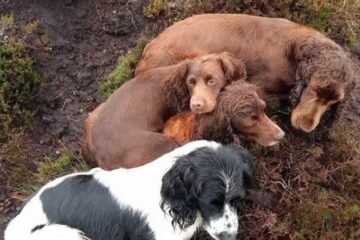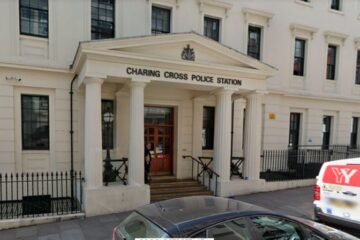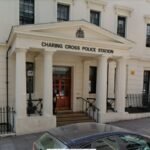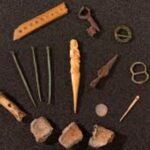Kinloch Castle, a historic Victorian hunting lodge on Scotland’s Isle of Rum, has been listed for sale with offers starting over £750,000. Owned by government agency NatureScot, the property returns to the market after a failed deal two years ago, amid hopes for a buyer who can restore it while supporting the local community.
Castle’s Rich Victorian Past
Built in the late 1890s by wealthy industrialist Sir George Bullough, Kinloch Castle served as a lavish retreat for hunting and entertaining. The red sandstone structure boasts ornate turrets, grand interiors, and features like an early orchestrion, a self-playing musical instrument.
Over the years, it hosted royalty and high society, including a visit from King Charles. Today, the castle stands as a Category A listed building, preserving Scotland’s heritage amid the rugged Hebridean landscape.
The Isle of Rum, part of the Small Isles, adds to its allure with stunning views of mountains and sea. Yet, time has taken a toll, leaving the castle in need of major repairs.
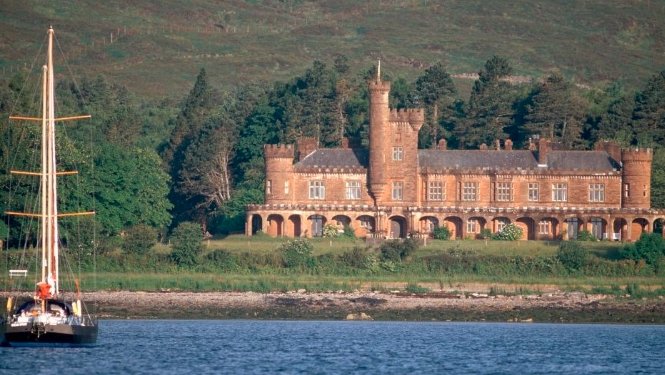
Reasons Behind the Sale
NatureScot, which manages most of the island as a national nature reserve, cites high maintenance costs as the main driver for selling. The agency has spent years exploring options, including a recent study that polled the island’s roughly 40 residents.
That research showed most locals support a sale, as long as the new owner commits to community benefits. Without a buyer, the castle risks further decay, which could harm the island’s economy and tourism draw.
Selling aligns with broader efforts to sustain remote Scottish communities. NatureScot aims to find a buyer who will redevelop the site responsibly, boosting jobs and visitor numbers.
The timing feels right, with Scotland’s property market showing interest in unique historic homes. Experts note that similar properties have sold well when tied to eco-friendly plans.
Failed Deal from Two Years Ago
In 2023, millionaire businessman Jeremy Hosking offered to buy the castle but pulled out after disputes. He blamed then-biodiversity minister Lorna Slater for halting the process over community concerns.
The Isle of Rum Community Trust voiced worries about access rights and local involvement. This led to a pause, and the deal collapsed, leaving the castle empty.
Now, NatureScot has relaunched the sale through agents Savills, hoping to avoid past pitfalls. The agency stresses that any offer must include plans for community support.
This isn’t the first setback for Kinloch. Previous attempts to repurpose it as a hotel or museum fell through due to funding issues.
Lessons from the failed bid have shaped the current approach, with clearer guidelines for buyers.
Key Community Demands
Islanders have set out specific conditions to ensure the sale benefits Rum. A government report highlighted their priorities, focusing on long-term positive impacts.
Here are some main demands from the community:
- Active involvement in the castle’s future use, such as public access to parts of the grounds.
- Respect for land access rights, allowing locals and visitors to enjoy the surrounding nature.
- Contributions to the island’s economy, like creating jobs or supporting eco-tourism.
- Commitment to sustainability, aligning with Rum’s status as a nature reserve.
These points aim to prevent the castle from becoming a private enclave. A small group of residents opposed the sale, suggesting community ownership instead.
NatureScot’s Chris Donald emphasized that buyers must outline how they will aid the island’s nature, culture, and economy. This approach seeks to balance preservation with progress.
What Comes with the Purchase
For £750,000 or more, the buyer gets a sprawling estate including the castle, its contents, and surrounding grounds. The property spans acres with views of bays and mountains.
Inside, highlights include original furnishings, a ballroom, and even a rare alligator-skin bath. However, repairs could cost millions, given the building’s age and exposure to harsh weather.
| Feature | Details |
|---|---|
| Location | Isle of Rum, Inner Hebrides, Scotland |
| Size | Main castle plus grounds; exact acreage not specified but includes gardens and access to bay |
| Condition | Poor repair; needs major redevelopment |
| Price | Offers over £750,000 |
| Ownership | Currently NatureScot; sale includes building and select contents |
| Unique Aspects | Victorian interiors, historical artifacts, proximity to nature reserve |
The island’s remote spot means ferry access from the mainland, adding to its charm for those seeking seclusion. Potential uses include a boutique hotel, private home, or eco-retreat.
Buyers should note the island’s small population and reliance on tourism. Any plans must fit with local life and environmental rules.
Hopes for a Bright Future
Experts predict interest from investors drawn to Scotland’s booming heritage market. Similar sales, like restored castles in the Highlands, have succeeded by blending history with modern amenities.
The sale could spark tourism growth on Rum, known for its wildlife and hiking trails. If handled well, it might create jobs and draw visitors year-round.
Challenges remain, such as funding repairs and navigating regulations. Yet, with community backing, the right buyer could revive this gem.
What do you think about buying a piece of Scottish history? Share your thoughts in the comments and spread the word to help find Kinloch Castle’s next chapter.

